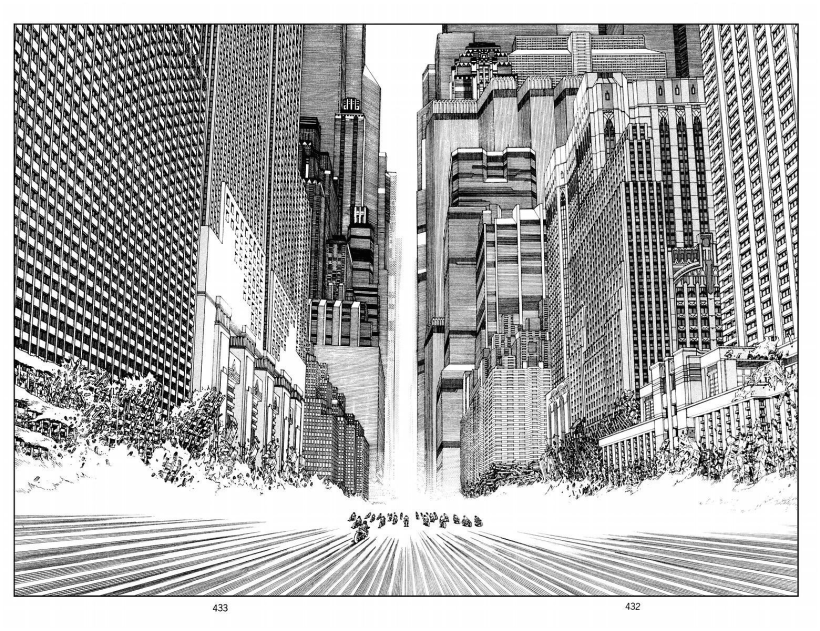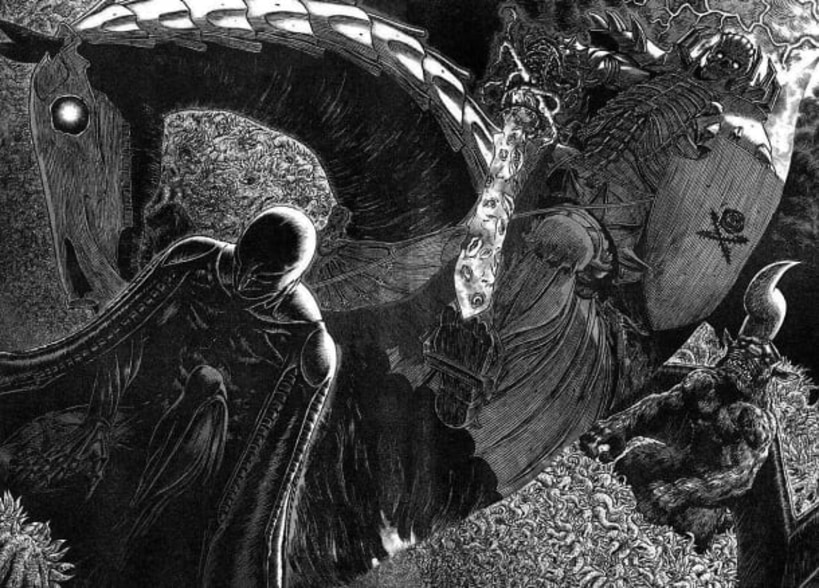13 Great Manga Artists That Made History
13 Great Manga Artists That Made History
Discover the artists who paved the way for manga to become the influential Japanese art form it is today
Weekly Shōnen Jump is a dense brick of a magazine, that has barely paused for breath since its founding in 1968. In its half a century of publishing, it has sold 7.5 billion copies. Picking up a Weekly Shōnen Jump or any of its many competitors in a store, you’ll immediately notice how thick these magazines are—so much so they are sometimes called "phonebook manga".
The sheer amount of work required to meet fast turnarounds and hungry readerships make mangaka (manga artists) admirable, but creating manga goes far beyond speed. Manga features thrilling action, comedy, romance, and commentary about modern life, told through illustrated panels and dialogue. Every page is packed with detail for readers to get lost in.
Here, we explore the history of this Japanese cultural heritage, and some of its most influential artists. Prepare to be inspired...

Key moments of manga history
The word "manga" is comprised of two written characters, or kanji: the kanji for informal or whimsical (漫 man) and the one for drawing (画 ga). Thought to date back to scrolls of the twelfth and thirteenth centuries, the medium began with depictions of anthropomorphic animals and cartoon-y exaggerations of daily life.
In 1814, the ukiyo-e artist Katsushika Hokusai (who created the famous Great Wave off Kanagawa print) began to compile short stories and sketches into books he called manga, but it was Rakuten Kitazawa (1876-1955) who made the term in its modern usage popular. He had studied Western-style cartoons and founded his own magazine, which sold throughout Asia and influenced many other artists.
The American occupation of Japan following World War II had a huge impact on the cartooning industry, and in 1945 the “father of manga”, Osamu Tezuka, established it as a modern entertainment industry. Hoping to share a message of peace with his readers, his comics New Treasure Island and later Astro Boy became overnight successes and began what now gets called a “golden age” of manga.
The industry boomed, with many magazines founded in the fifties, sixties, and seventies, spawning subcategories for different age groups. Examples include shōnen manga, aimed at boys up to around eighteen, and seinen for adult men, both of which tend to feature action, comedy, heroism, and adventure.
Meanwhile, the market aimed at girls, shōjo (josei for women), features coming-of-age, historical, and romantic stories. They often challenge gender stereotypes, and sometimes feature LGBTQ+ relationships (the specific subset about two male characters in a relationship was called shōnen-ai, and was pioneered by artists like Moto Hagio).

Mangaka who defined the art form
There are so many important mangaka across all genres, it’s impossible to produce a definitive list that isn’t hundreds of artists long! But our selection below features everything from magical girls to gory horror to cyberpunk masterworks, showing the enormous diversity of popular manga.
Though below we explore thirteen key figureheads of the art form, we also recommend checking out such titles as Blade of the Immortal, by Hiroaki Samura; Gon, by Masashi Tanaka, Gekkō Kamen, by Yasunori Kawauchi; Speed Racer, by Tatsuo Yoshida; Doraemon, by Hiroshi Fujimoto; Mazinger Z, by Go Nagai; and Dr Slump and Dragon Ball, both by Akira Toriyama.
1. Katsuhiro Otomo - Akira
For many, Akira is considered the best manga ever written, due to its modern approach to dialogue, plot, and characters. The speculative, cyberpunk story has won numerous awards. Its creator, Katsuhiro Otomo, a lover of American films, published it in 1982. It was an immediate success, celebrated for its beautiful backgrounds and panoramic views of Neo-Tokyo.

2. Naoki Urasawa - 20th Century Boys
20th Century Boys was serialized in the late nineties, but today has 36 million copies of its compended volumes in circulation. Its story about a cult leader called “Friend”, and the young men out to stop him, has won many huge awards including the Kodansha Award and an Eisner. The themes of dealing with a haunting childhood past, and fighting conspiracies, has an ongoing, deep impact.

3. Hiroya Oku - Gantz
Hiroya Oku created one of the best bloody sci-fi action stories in manga history. Visually it's described as a work of art for its technical mastery, as Oku does a fantastic job of using 3D renders to create a seamless look throughout his world, not forgetting the attention to detail, down to every blemish or speckle of blood.

4. Hiromu Arakawa - Fullmetal Alchemist
Spawning several anime series and films, Fullmetal Alchemist is one of the most well-known manga franchises, and is also noteworthy for Arakawa’s move into the male-dominated shōnen space. This steampunk tale of two brothers whose forays into alchemy have disastrous consequences, is set in a parallel Europe during an industrial revolution. Despite tackling serious commentary with themes of war and family, the award-winning series is punctuated by comedy.

5. Makoto Yukimura - Vinland Saga
Makoto Yukimura created this gory manga with a high level of realism and precision. He had to move his weekly edition to monthly in order to include as much detail as possible. The results are so intricate and impressive that it won the 2009 Grand Prize at the Japan Media Arts Festival.

6. CLAMP - Cardcaptor Sakura
The only collective on this list, CLAMP is made up of four female artists who have published across shōnen and shōjo genres: Nanase Ohkawa, Mokona, Tsubaki Nekoi, and Satsuki Igarashi. Though known for their sci-fi series Chobits, and fantasy Magical Knight Rayearth, perhaps CLAMP’s most-known series is Cardcaptor Sakura. This take on the magical girl trope featured coming-of-age themes, and was turned into an anime and subsequent films and games. It’s noted for its cute character and costume design.

7. Yusuke Murata - One Punch Man
This comedic action title features detailed art, clever writing, and sharp drawings. Murata is a pillar of the new generation of Japanese artists because of his work with color, lines, details, technique, his character design and the ease with which he matches each line with the storytelling. His talent has led him to collaborate with Capcom, Marvel, and Pokémon.

8. Junji Ito - Uzumaki
From a young age, Junji Ito was inspired by his older sister's drawings and Kazuo Umezu's comics, which led to a strong interest in writing horror stories. Uzumaki, as well as the rest of Ito's work, is wonderfully horrible. Terrifying yet fascinating, the art itself is key to building dread and keeps the reader in constant tension, before climactic reveals at the end of his stories.

9. Inio Asano - Oyasumi Punpun
Inio Asano is recognized for his realistic stories that range from romance to psychological horror. In 2001, he won first prize in the GX competition for young manga artists; the Yomiuri Shimbun newspaper described Asano as "one of the voices of his generation". Oyasumi PunPun is a story about adolescence and the grim realities of transitioning to adulthood; his art establishes a dense, realistic atmosphere that presents various emotions through different aesthetics.

10. Naoko Takeuchi - Sailor Moon
Serialized in the early nineties, Pretty Soldier Sailor Moon (also translated as Pretty Guardian Sailor Moon) became influential worldwide, spawning a popular anime series, and both animated and live-action productions. Another magical girl story, a sensitive teen is forced into the world of heroics through her connections to an ancient, magical civilization on the Moon. Takeuchi’s artwork is striking in its depiction of fairy-like, ethereal characters, with very light, delicate linework.

11. Kentaro Miura - Berserk
Berserk has 50 million copies in circulation, and is celebrated for its creativity and well-executed, often gruesome art. The dark fantasy series’ creator, Kentaro Miura, studied various ink drawing techniques and has a tremendous ability to create sharp, clear, and highly fluid fight scenes, as well as a rich shading technique to give a surreal feeling. The manga was adapted into various anime and films.

12. Rumiko Takahashi - Ranma 1/2
Though also known for the popular series Inuyasha, it’s the sheer size and impact of Ranma (thirty-eight volumes) that shows Takahashi’s talent and importance in the industry. Both the manga and anime came to America early in the transition of manga to a global market, so the series is beloved internationally. This comedy tells the story of a young martial artist who turns into a girl when splashed with cold water, and back into a boy when splashed with hot water, and the many surreal situations this leads to.

13. Takehiko Inoue - Vagabond
Vagabond is a moving piece of art, with a setting that mixes intense beauty with gritty aesthetics. Its illustrator, Takehiko Inoue, is an important mangaka, most famous for Slam Dunk, but who achieved great recognition with Vagabond for his character design and an excellent understanding of form, perspective and line thickness.

I think this post is missing some of the biggest ones like Eiichiro Oda, Masashi Kishimoto, Takeshi Obata, Akira Toriyama, and Kentaro Miura. I wrote about those on my personal blog
ReplyDeleteI think Tetsuo Hara and Hiroiko Araki are missing! Hokuto no Ken and Jojo are a piece of history in manga.
ReplyDelete